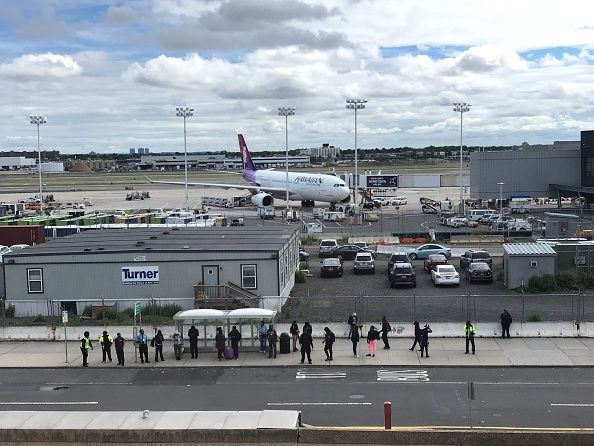Hawaiian Airlines And JetBlue Airways Tighten Their Partnership

Hawaiian Holdings (NASDAQ:HA) expanded to the East Coast back in 2012, launching a nonstop flight between Honolulu and New York's JFK International Airport. Even before starting service on that new route, Hawaiian Airlines formed a code-share and frequent-flier partnership with JetBlue Airways (NASDAQ:JBLU), which has its largest base at JFK Airport.
This article originally appeared in the Motley Fool.
A little more than two months ago, Hawaiian Airlines announced plans to begin serving a second East Coast destination, Boston, in April. JetBlue is the market share leader in Boston, which is the carrier's second largest focus city.
On Tuesday, the two carriers confirmed that they will take advantage of the potential synergies of Hawaiian Airlines' new route to Boston by expanding their partnership.
A perfect match
Hawaiian Airlines and JetBlue Airways are both very successful, but each has some notable weaknesses. For example, Hawaiian Airlines doesn't operate any flights within the continental U.S. -- only nonstops to and from Hawaii. Its addressable market is therefore limited, as many cities don't have enough demand to support nonstop flights to Hawaii.
Meanwhile, JetBlue has a strong market position in several of its East Coast focus cities, but its all-narrowbody fleet makes it hard to serve many popular destinations, especially on a nonstop basis. As a result, it doesn't fly to Hawaii at all, even though plenty of its customers travel there.
This situation made it natural for Hawaiian Airlines and JetBlue Airways to team up once the former had decided to begin flying to the East Coast. The two airlines have a codeshare partnership, making it easy for customers to book itineraries that connect between JetBlue flights and Hawaiian Airlines flights in New York. Hawaiian Airlines even uses JetBlue's terminal at JFK Airport. They also have a frequent-flier partnership, allowing customers of each carrier to earn and redeem points on either airline.
This relationship helps both carriers. JetBlue provides connecting traffic for Hawaiian's New York-Honolulu flights, while Hawaiian Airlines offers JetBlue frequent fliers the opportunity to redeem their points for flights to Hawaii.
Expanding the partnership to Boston
Hawaiian Airlines chose Boston as its next new destination primarily because it is the largest U.S. market without nonstop service to Hawaii. However, JetBlue's status as the No. 1 carrier there clearly didn't hurt.
Not surprisingly, Hawaiian and JetBlue now plan to expand their codeshare and frequent-flier partnership to cover the new Boston-Honolulu route. That's important, because it will allow Hawaiian Airlines to carry customers coming from cities such as Baltimore, Philadelphia, and Pittsburgh that JetBlue doesn't serve nonstop from JFK Airport.
JetBlue's position as the No. 1 airline in Boston also means it carries more business travelers there than in its other focus cities. That means it has lots of Boston-based customers with plenty of frequent-flier points to burn -- including on flights to Hawaii.
An important tool for diversifying
Even without the JetBlue partnership, flying to Boston looked like a good bet for Hawaiian Airlines. Teaming up with the city's top airline increases the likelihood that the new route will be a big success.
That's particularly important for Hawaiian right now, as its profitability has recently come under pressure from stiff competition in the West Coast-Hawaii travel market, its most important geography. Competition on those routes -- and on interisland routes within Hawaii, another key market segment -- is likely to remain stiff in 2019 and perhaps even in 2020.
Developing new markets with less competition -- or, like Boston, with no nonstop competition -- will reduce the impact of industry competitive dynamics on Hawaiian Airlines' profitability. The Hawaiian Airlines-JetBlue partnership will give Hawaiian a wide moat on the Boston-Honolulu route and should drive better earnings results for Hawaiian Airlines.
Adam Levine-Weinberg owns shares of Hawaiian Holdings and JetBlue Airways and is long January 2019 $10 calls on JetBlue Airways. The Motley Fool recommends Hawaiian Holdings and JetBlue Airways. The Motley Fool has a disclosure policy.





















